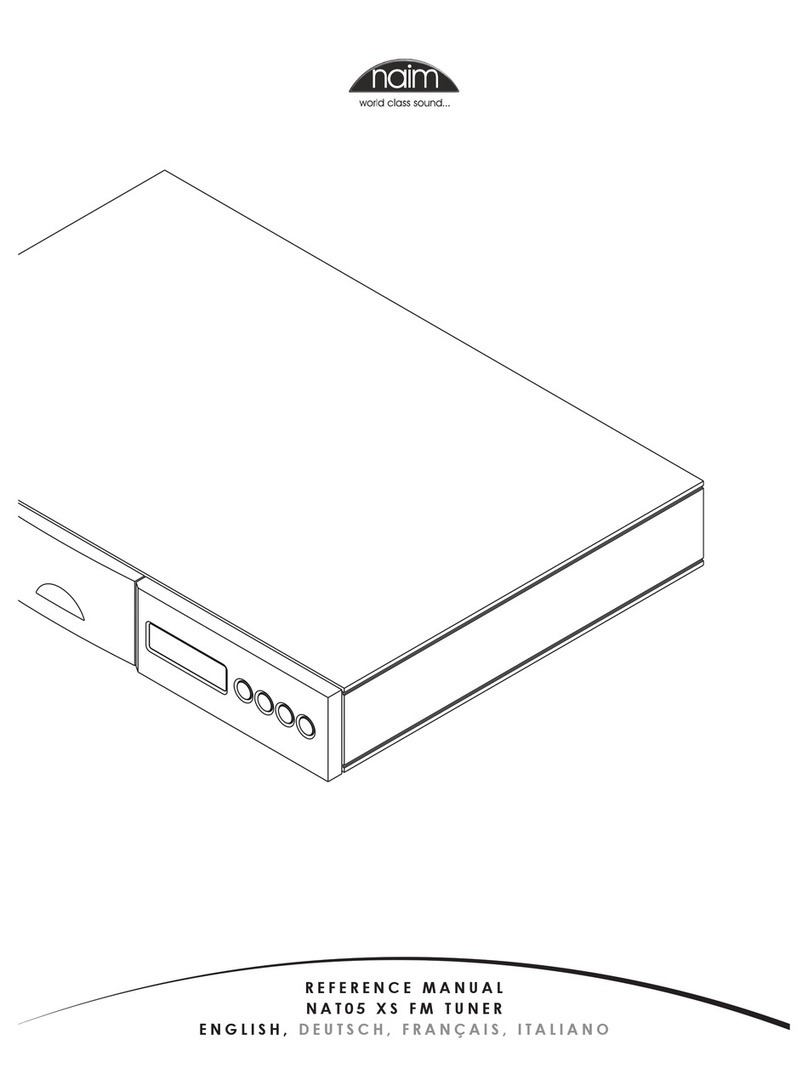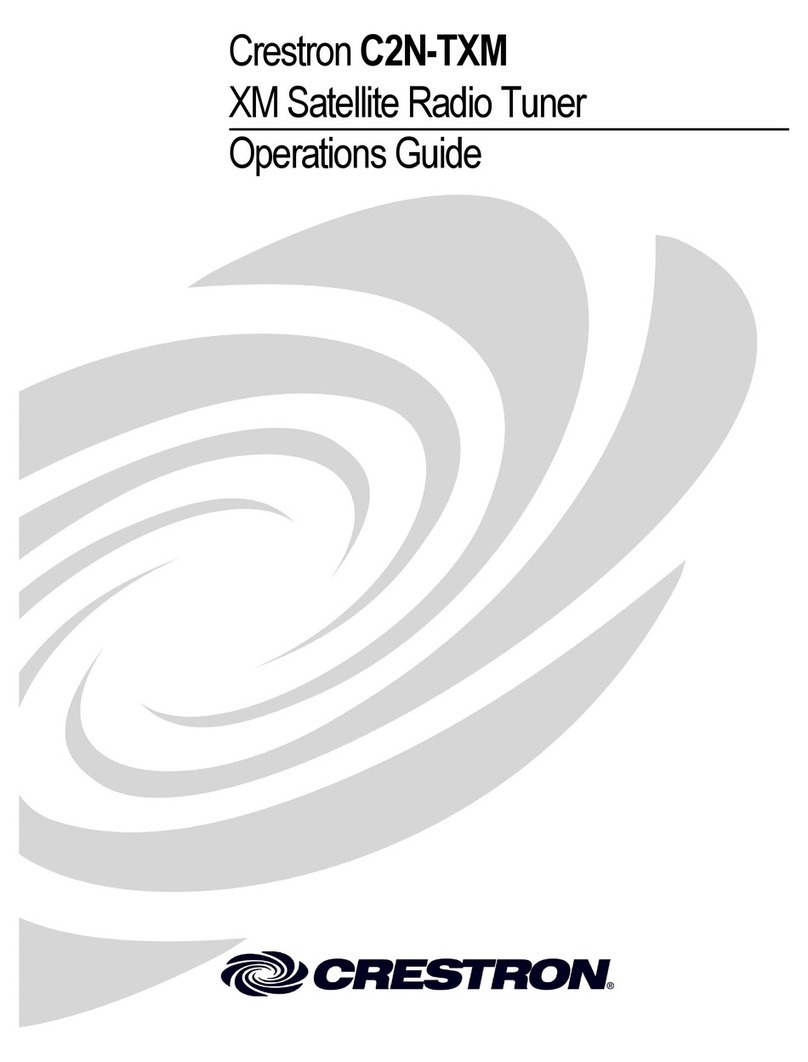2.0 Getting Started
2.1 switching on and off
Source components and power supplies for cd players, tuners, preamplifiers and crossovers
should be switched on before switching on the amplifier(s). Always switch the amplifier(s)
off and wait about a minute for its power supply capacitors to discharge before
connecting or disconnecting any leads. Always use the power switch on the product rather
than a mains outlet switch.
2.2 running in
Your Naim equipment will take a considerable time to run-in before it performs at its best.
The duration varies, but under some conditions you will find that the sound continues to
improve for as much as five weeks. Better and more consistent performance will be
achieved if the system is left switched on for long periods. It is worth remembering
however that all electronic equipment can be damaged by lightning. Please read the
warnings section.
2.3 mains supply
Where fused plugs are used 13 amp fuses should be fitted. Fuses of a lower rating will fail
after a period of use.
A hi-fi system usually shares a mains circuit with other household equipment some of
which can cause distortion of the mains waveform. In some Naim equipment such
distortion can lead to a mechanical hum from the transformers. The hum is not
transmitted through the speakers and has no effect on the performance of the system but
is purely local to the transformer itself. A separate fused mains circuit (like that reserved
for electric cookers) may reduce transformer hum. Such a circuit (ideally with a 30 or 45
Amp rating) will also have a lower impedance, supply cleaner power, and consequently
improve system performance.
Do not wire voltage dependent resistors or noise suppressors into mains plugs. They
degrade the mains supply and the sound.
2.4 siting the equipment
Power supplies and amplifiers should be located a reasonable distance away from other
equipment. This separation will stop transformer radiation causing hum audible from the
loudspeakers. The minimum recommended distance is 300mm (12 inches), and that
allowed by the standard interconnect lead is the maximum.
Some Naim equipment is extremely heavy. Ensure than your equipment rack or table can
easily support the weight and is stable.
2.5 if you have a problem
Legal consumer protection varies from country to country. In most territories a dealer
must be prepared to take back any Naim equipment he has sold you if he cannot make it
work to your satisfaction in your own home. A problem may be due to a fault in any part
of the system or its installation so it is essential to make full use of your local dealer’s
diagnostic skills on site. Please contact your local distributor, or Naim at the address in
the back of this manual, if any difficulties cannot be resolved. Some Naim equipment is
made in special versions for different territories and this makes it impracticable to arrange
international guarantees. Please establish the guarantee arrangements with your own
dealer at the time of sale. We are always available to offer help and advice.
It is essential that repairs and updates are only carried out by an authorised Naim dealer,
or at the factory by Naim itself. Many components are made, tested or matched specially
for Naim and appropriate replacements are often unobtainable from non-specialist
sources.
2




























